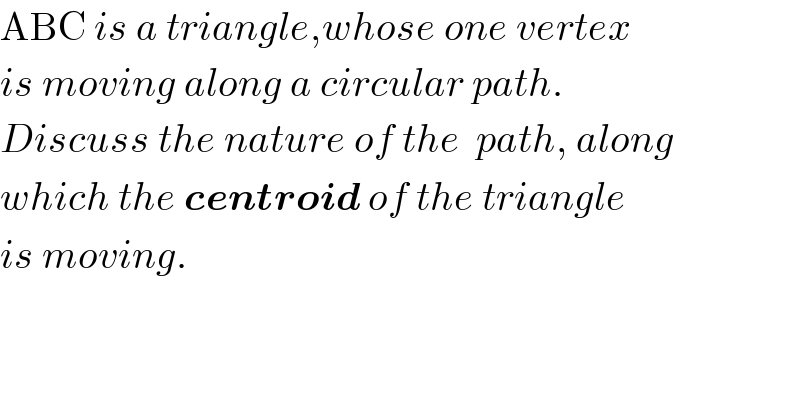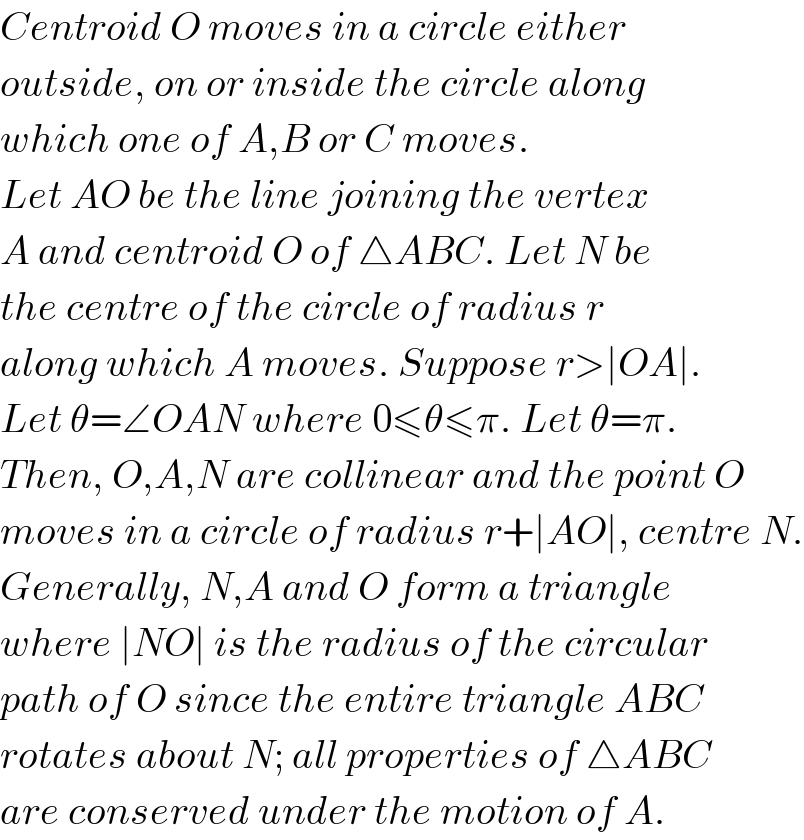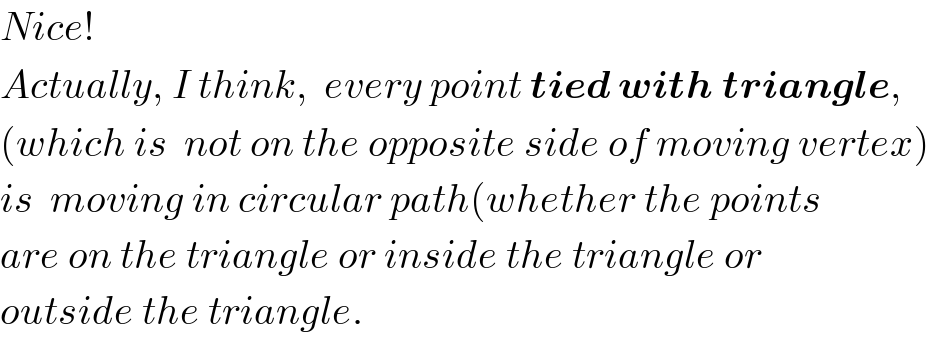Question Number 6640 by Rasheed Soomro last updated on 07/Jul/16

Commented by Rasheed Soomro last updated on 08/Jul/16

Commented by Yozzii last updated on 07/Jul/16

Commented by Yozzii last updated on 07/Jul/16
![So, ∣NO∣=(√(r^2 +∣AO∣^2 −2r∣AO∣cosθ)). If O lies on the circle just as A moves along it, ∣NO∣=r ⇒cosθ=((∣AO∣)/(2r)). θ=cos^(−1) ((∣AO∣)/(2r)) Since ∣cosθ∣≤1 ∀θ∈[0,π], ⇒∣AO∣≤2r or r≥(1/2)∣AO∣ So, if the triangle is to be positioned so that both A and the centroid O move on the same circle of radius r it is necessary that r≥0.5∣AO∣ and θ=cos^(−1) ((∣AO∣)/(2r)). If θ=0⇒∣NO∣=r−∣OA∣ so O moves along a circle inside the circle for A.](https://www.tinkutara.com/question/Q6645.png)
Commented by Rasheed Soomro last updated on 08/Jul/16

